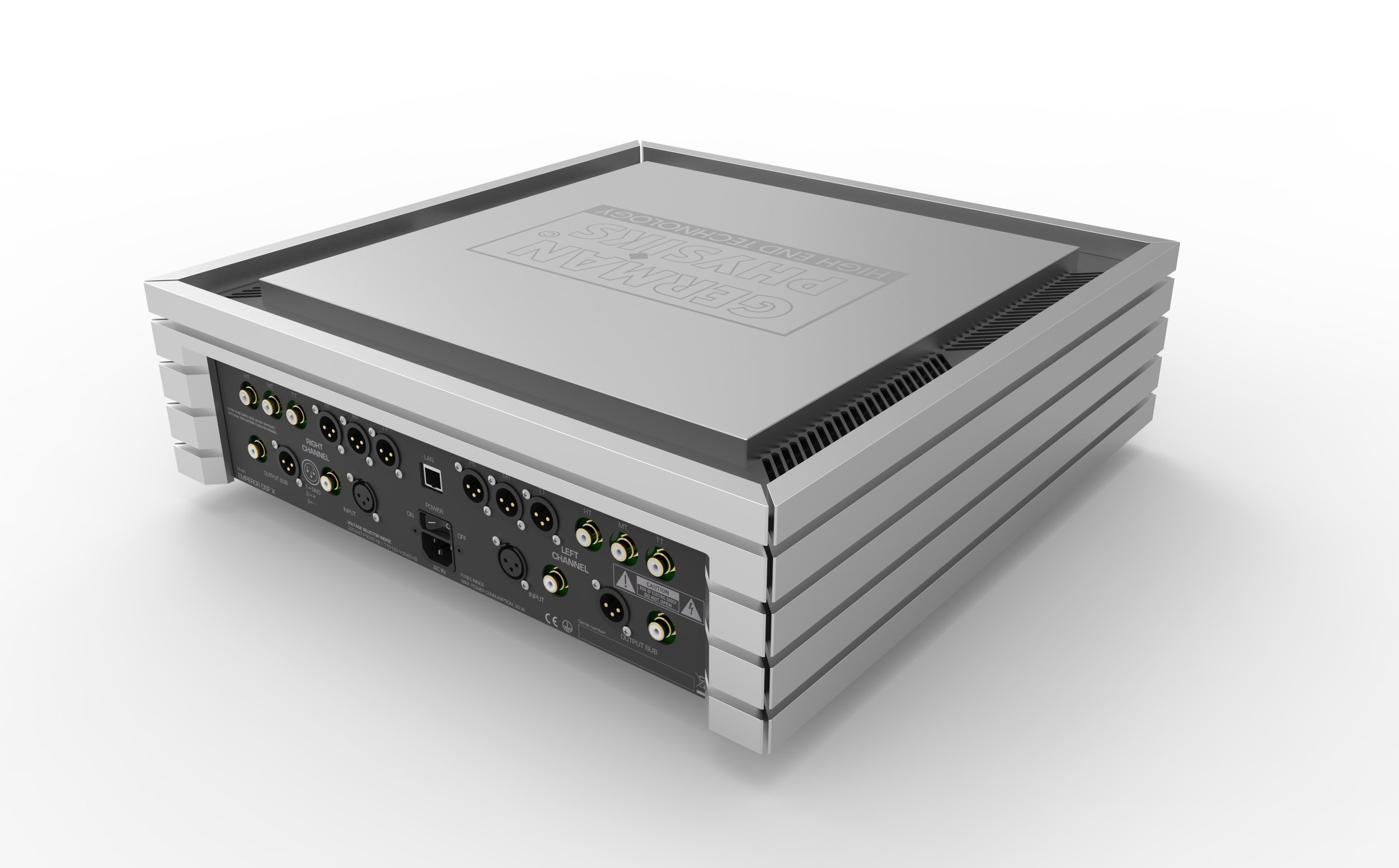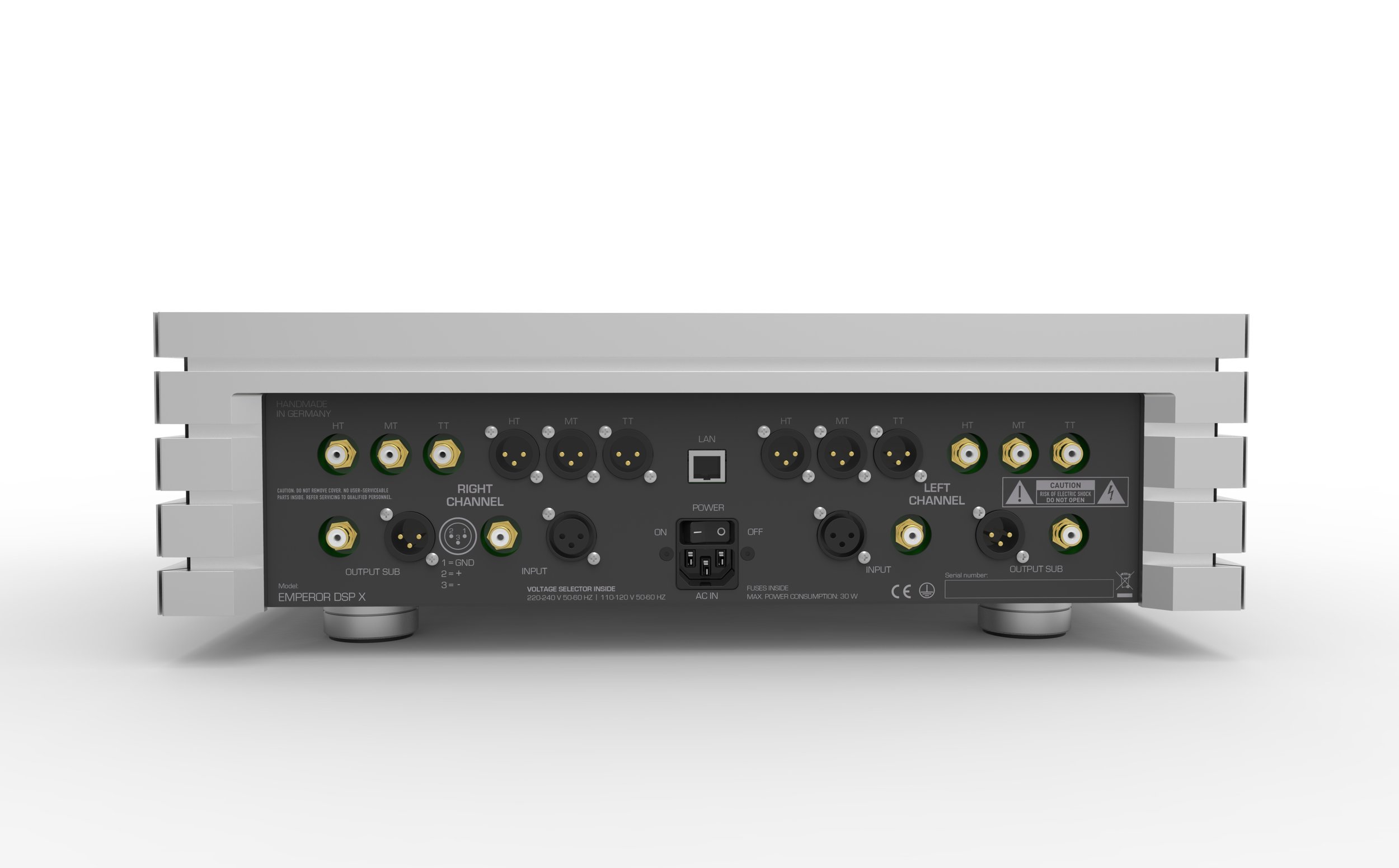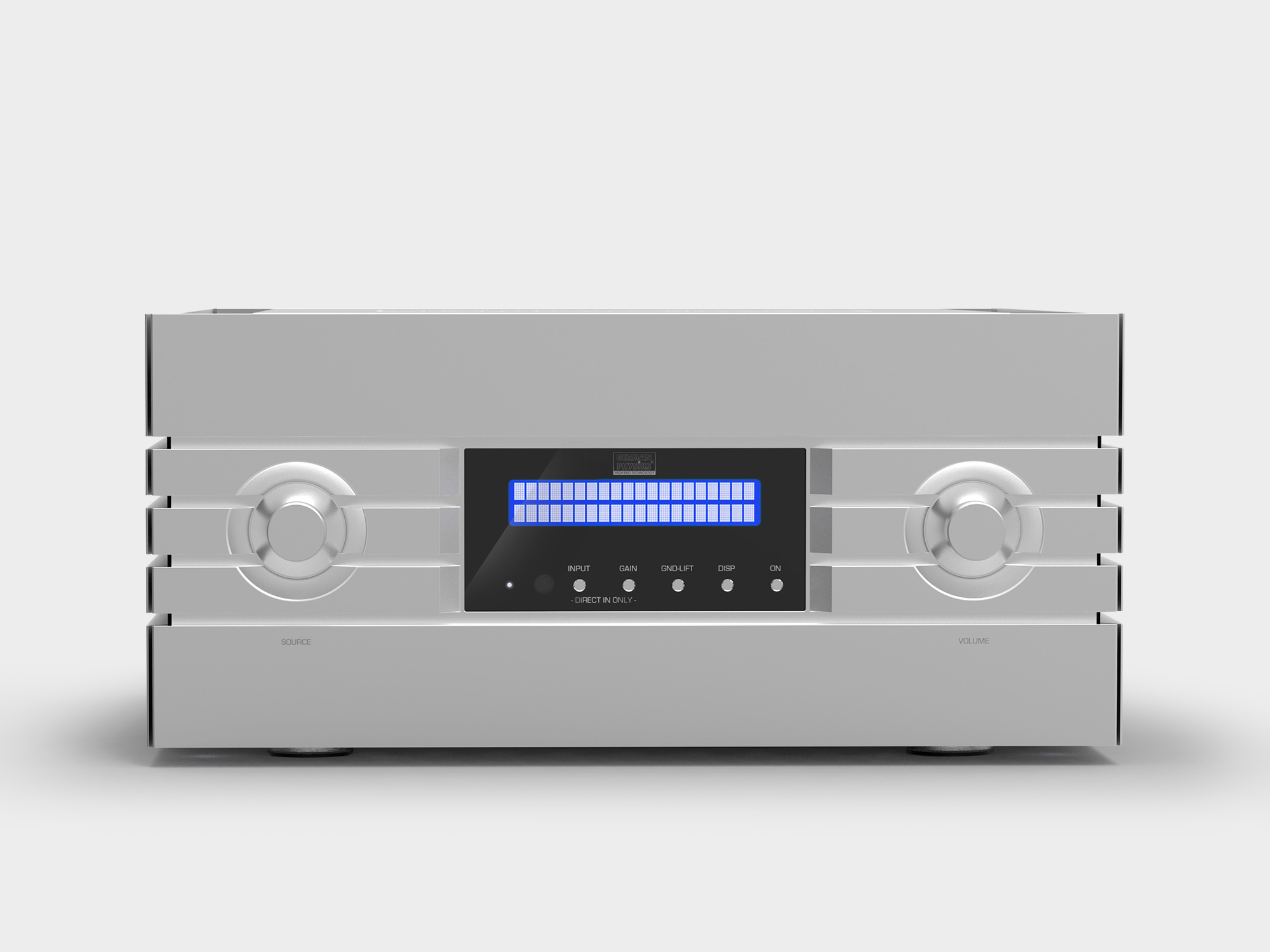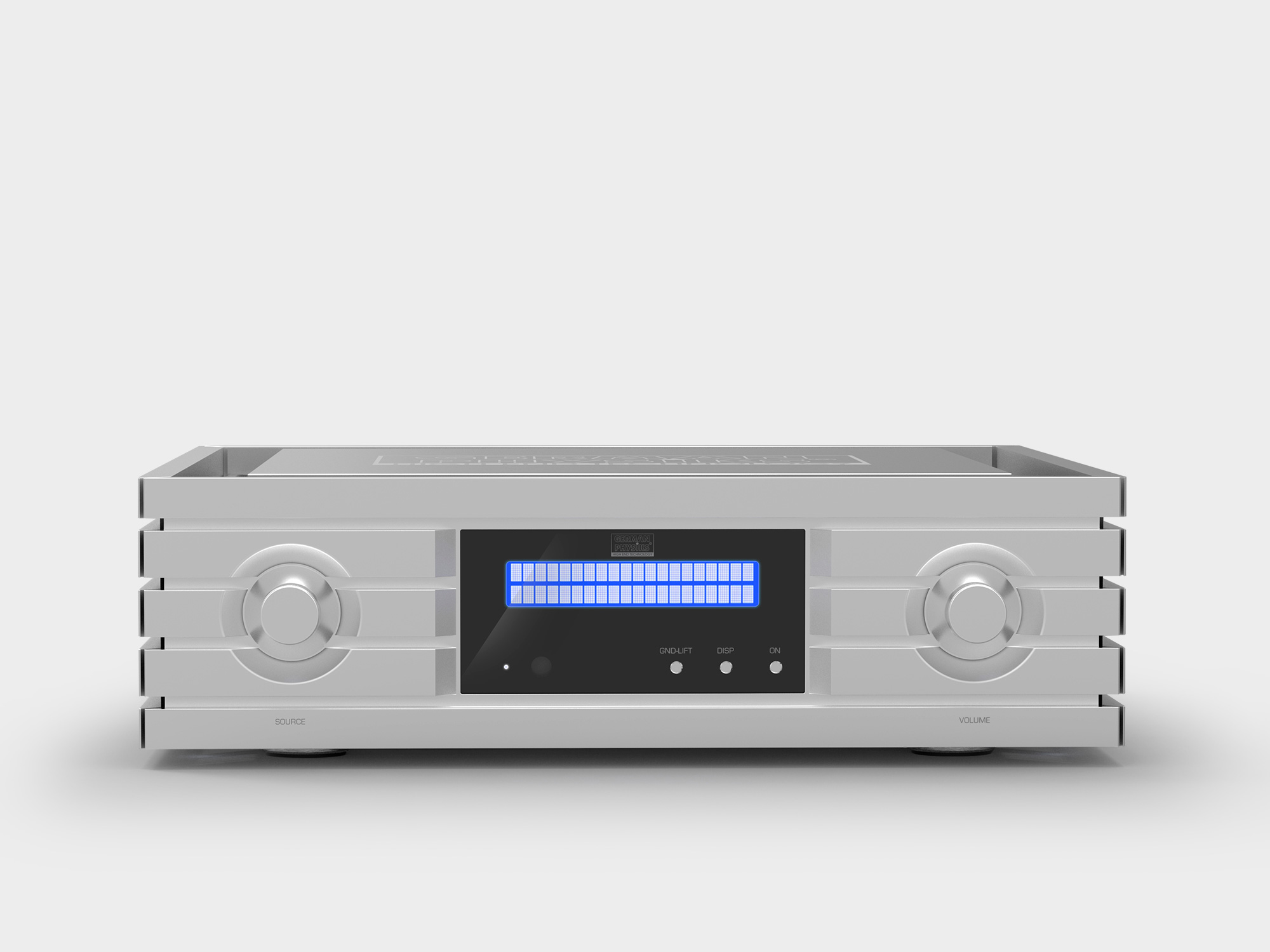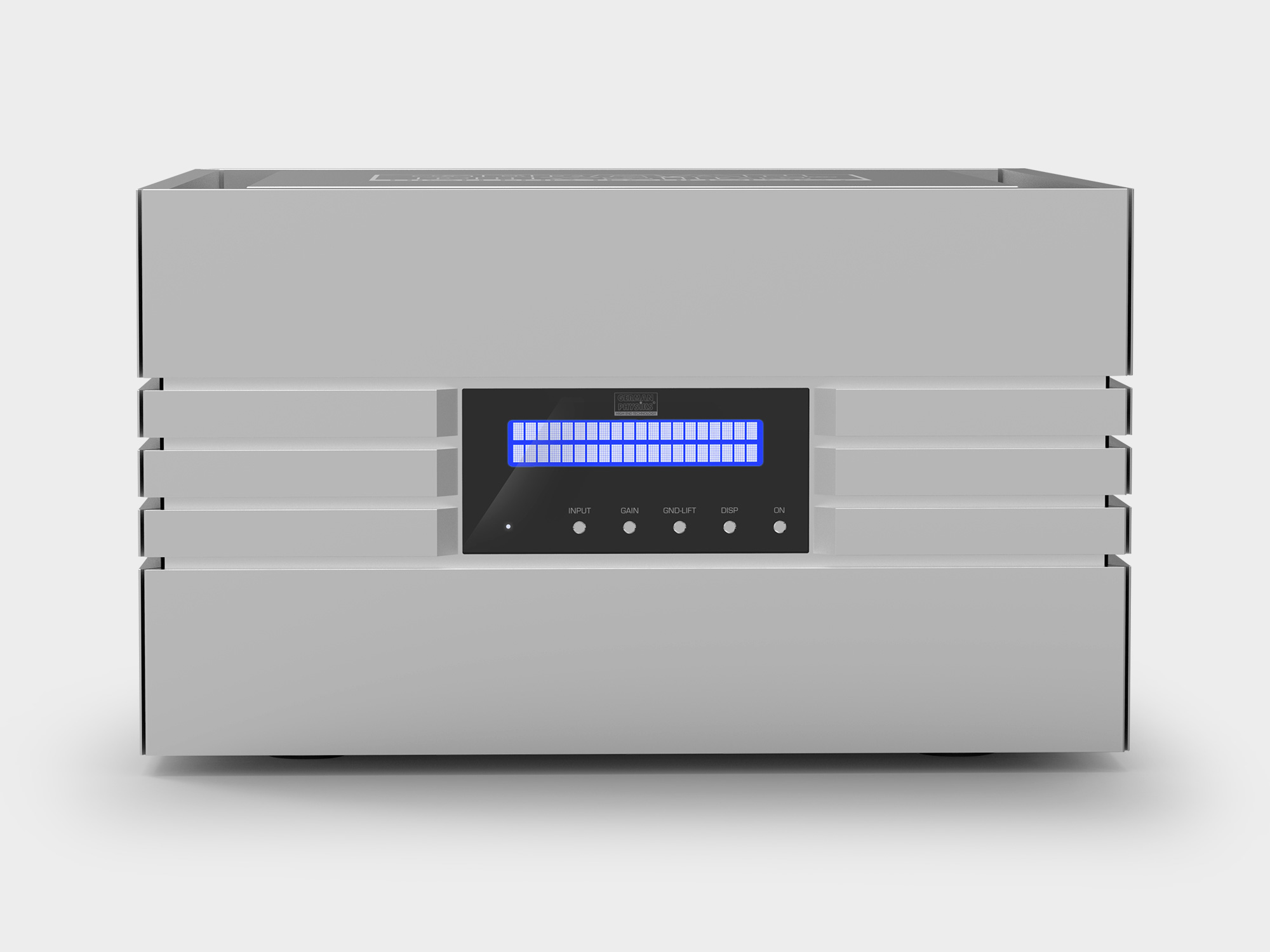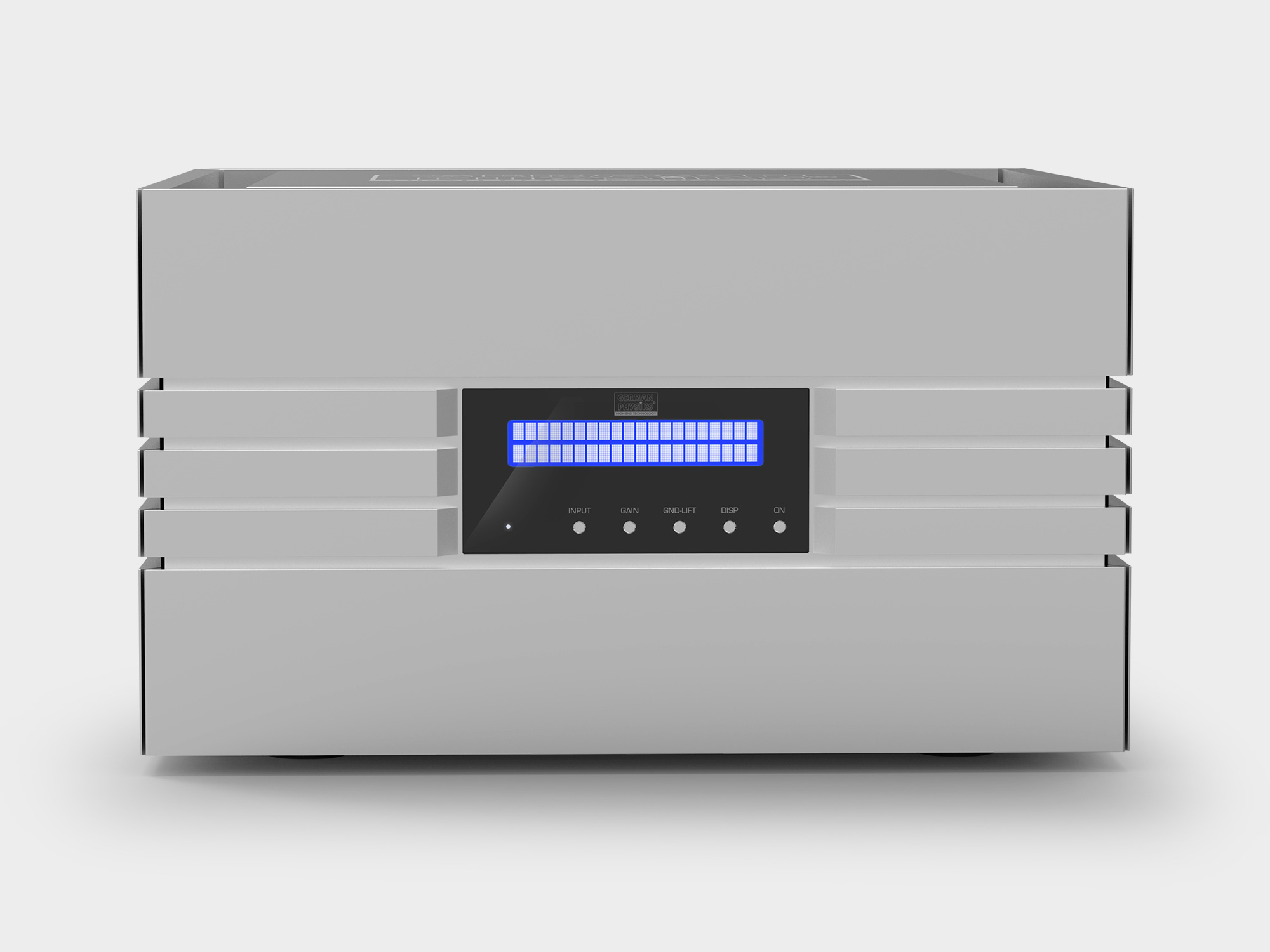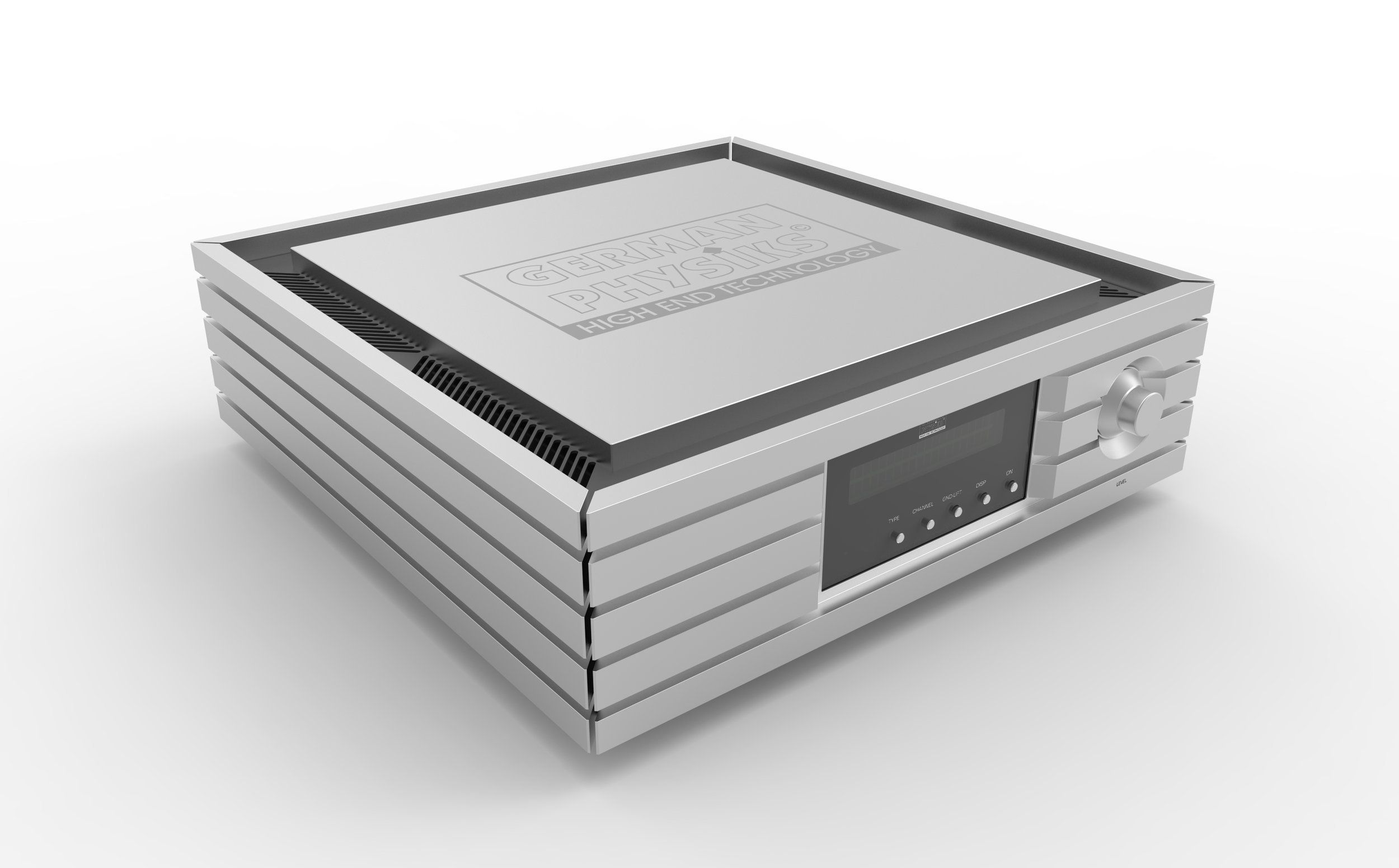

Pushing the boundaries
The Emperor DSP-X digital active crossover is designed to be used with the top five models in the German Physiks loudspeaker range to allow them to be operated in fully active systems
This provides a significant improvement in performance over a passive system. The unit may also be programmed to work with almost any other 2-way or 3-way loudspeakers. It uses high quality analogue input and output circuitry and a precision digital processing section to provide exceptional sound quality.
It is supplied as standard with our Gaudi, Emperor and Loreley models and may be specified as an optional extra for our PQS-302 and PQS-402 models.
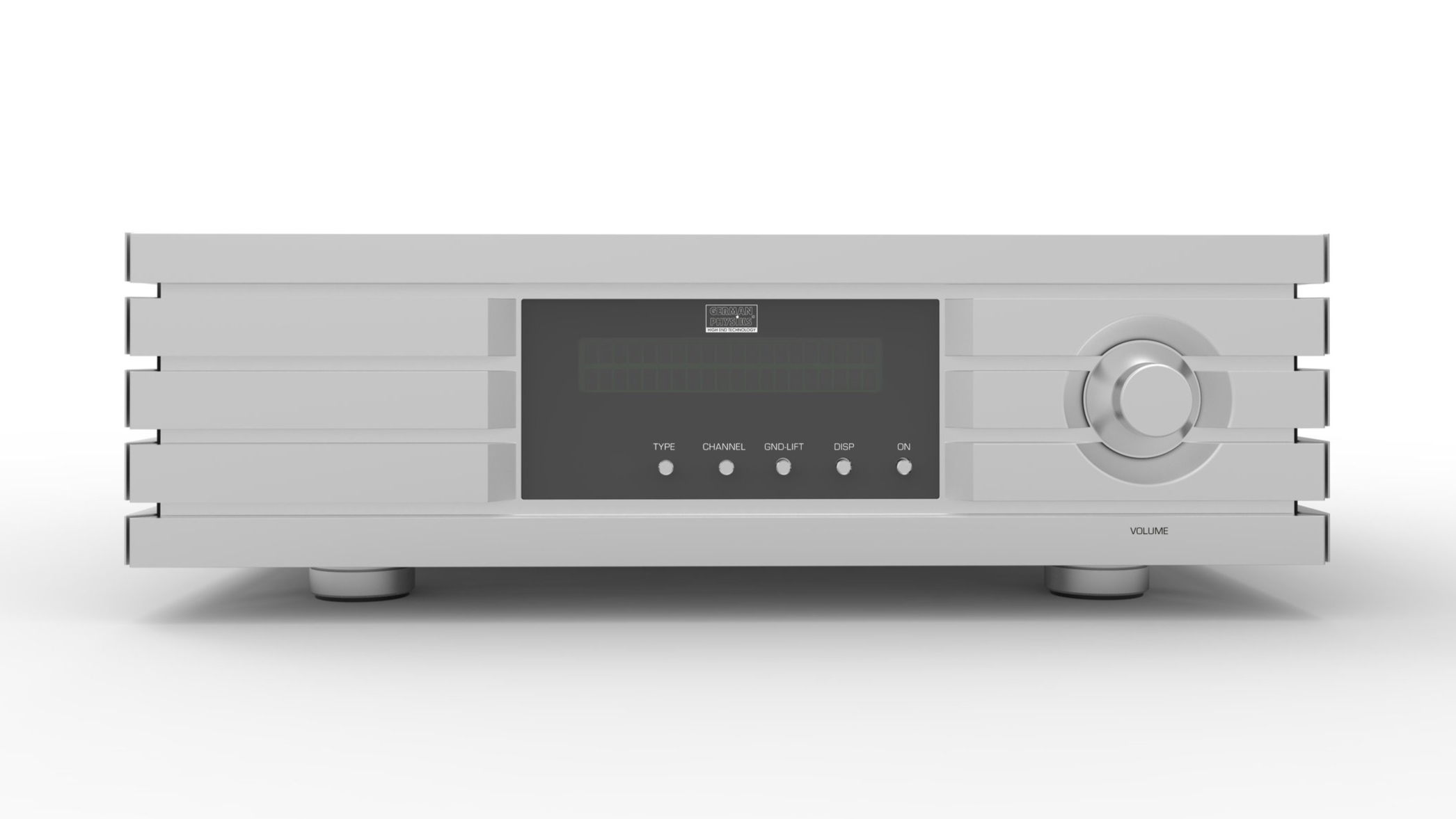
What is the difference between an active and passive system?
Passive System
Most loudspeakers use two or more drivers to cover the full audio range. In the case of a 3-way loudspeaker, one driver will cover the low frequencies, one the mid-frequencies and one the high frequencies. Each driver will be optimised for the range it covers. If it is operated outside of this range, it will produce high levels of distortion and possibly result in the driver being damaged.
A filter built in to the loudspeaker cabinet called a crossover, takes the signal from the power amplifier and splits it into frequency bands appropriate for each driver. The crossover uses inductors, capacitors and resistors, which are referred to as passive i.e. non-amplifying components and so this type of crossover is called a passive crossover. Figure 1 shows an example of a system with a 3-way loudspeaker using a passive crossover. Such a system can be comparatively simple, requiring only one power amplifier for each loudspeaker.
Figure 1. An example of a passive loudspeaker system
Active System
In an active system, the passive crossover is omitted and a power amplifier is connected directly to each section of the loudspeaker. The signal to drive each power amplifier is provided by the active crossover, which takes its signal from the preamplifier and then filters it into the appropriate bands. Figure 2 shows an example of how the Emperor DSP-X digital crossover would be used to implement a fully active 3-way loudspeaker system.
The filters in an active crossover may be totally analogue, or they may be digital. The Emperor DSP-X uses digital filters, as they allow more sophisticated filter characteristics to be implemented, enabling the loudspeaker designer to get much closer the exact filter characteristic that they wanted.

What are the advantages of an active system?
Although an active system is much more complex and therefore more expensive than a passive system, it offers several advantages, which are especially useful in very high performance systems.
[1] There is usually very little scope to adjust the frequency characteristic of a passive crossover to compensate for variations in frequency response caused by individual room acoustics. The Emperor DSP-X provides two means of adjustment to enable a more even frequency response to be achieved. The relative levels of the 3 output sections may be adjusted via a front panel control and more sophisticated adjustments may be made using a remote-control application.
[2] In an active system, the elimination of the passive crossover allows the power amplifiers to be connected directly to the drivers. This greatly improves the damping of the driver movement. This principally affects the low frequency drivers, significantly improving the clarity of the bass.
[3] Resistive components in the passive crossover dissipate power. Eliminating these improve both the efficiency and the dynamic response of the system. More power can reach the drivers and the amplifiers work with more headroom.
[4] The use of a digital filter allows the loudspeaker designer to get much closer the exact filter characteristic that they wanted, without having to accept the compromises imposed by the limitations of passive designs.
[5] If a passive crossover is driven at high levels for a prolonged period, it can result in the resistive components heating up sufficiently for their values to change and have an effect on the crossover’s characteristics. Whilst this is usually a minor effect, the Emperor DSP-X eliminates the possibility of this occurring.
In our experience, with a very high performance system where changes are more easily heard, the improvement in sound quality, especially in the areas of bass clarity and overall transparency that the Emperor DSP-X crossover provides, would be difficult to achieve by other means.


Easy to use without sacrificing functionality
Factory Preset
The Emperor Extreme crossover is programmed at the factory with the necessary settings for the particular German Physiks loudspeaker it is to be used with. All the user has to do is to connect it into their system and switch it on.
The level of each of the three outputs may be adjusted + or – 6dB using a high-quality analogue level control, which is operated via a knob on the front panel. This provides the user with a simple and easy means to adjust the basic tonal character of the system. On 2-way German Physiks loudspeakers the DDD drivers cross to the bass system at around 200Hz, so this control will essentially act as a bass control. On the Gaudi and Emperor, which are 3-way systems, the sub-woofer system starts around 70Hz, so being able to trim this level allows sub-bass adjustment.
Upgradable
The Emperor DSP-X’s internal software may be updated by connecting it to the internet via its rear panel Ethernet port.

Quality and reliability
The Emperor DSP-X is designed and manufactured in Germany. To ensure excellent sound performance and high reliability, great care and attention has been devoted to all stages of production: from the initial design to component selection and final manufacture
Before a single component was soldered, many hours were spent carrying out detailed computer modelling, in order to optimise the technical performance of the various sections of the design. All the components were selected for both their technical excellence and reliability. To further enhance the reliability, all components are operated well within their maximum limits. The final selection of components and topology was made on the basis of exhaustive listening tests, as well as detailed measurements.
It is well known that the operating temperature of electronic equipment has a direct effect on its reliability and the length of its useful service life. The higher the operating temperature, the poorer the reliability and the shorter the service life. When the Emperor range was designed, we employed a specialist engineer to analyse the airflow through the products and optimise the cooling effect. Consequently, they run very cool, maximising both the reliability and the useful service life.
Great attention was also paid to the aesthetics and the mechanical construction. This is a very high-quality product, so the look and build quality had to be of a commensurate level.
The construction uses an internal steel chassis with a 15mm thick silver anodised aluminium outer case. This provides magnetic screening, together with structural rigidity to minimise the effects of external vibration. The fit and finish of the chassis is first class and this combined with the impressively smooth feel of the controls, reassures the user of the high level of quality that this product offers.
Before dispatch, each unit is given a prolonged burn-in run before being subject to an intensive battery of electronic tests. Only when it has successfully passed these and been given a final physical inspection is it judged ready to be sent to the customer.
Product Specifications
(more details to follow)
Controls
Channel level adjustment
Type
Channel
Ground lift
Display on/off
Inputs
RCA x 1 pair
XLR x 1 pair
Output channels
3 stereo pairs plus outputs for 2 sub-woofers
RCA and XLR connectors are provided for each output
Other information
Ethernet output provided for connection to computer for software updating
Finish
Silver anodized aluminium
Dimensions
474 mm W x 160 mm H x 474 mm D
Weight
35kg
Warranty
5 years
As part of our process of continually improving our products, we reserve the right to change specifications without notice.


